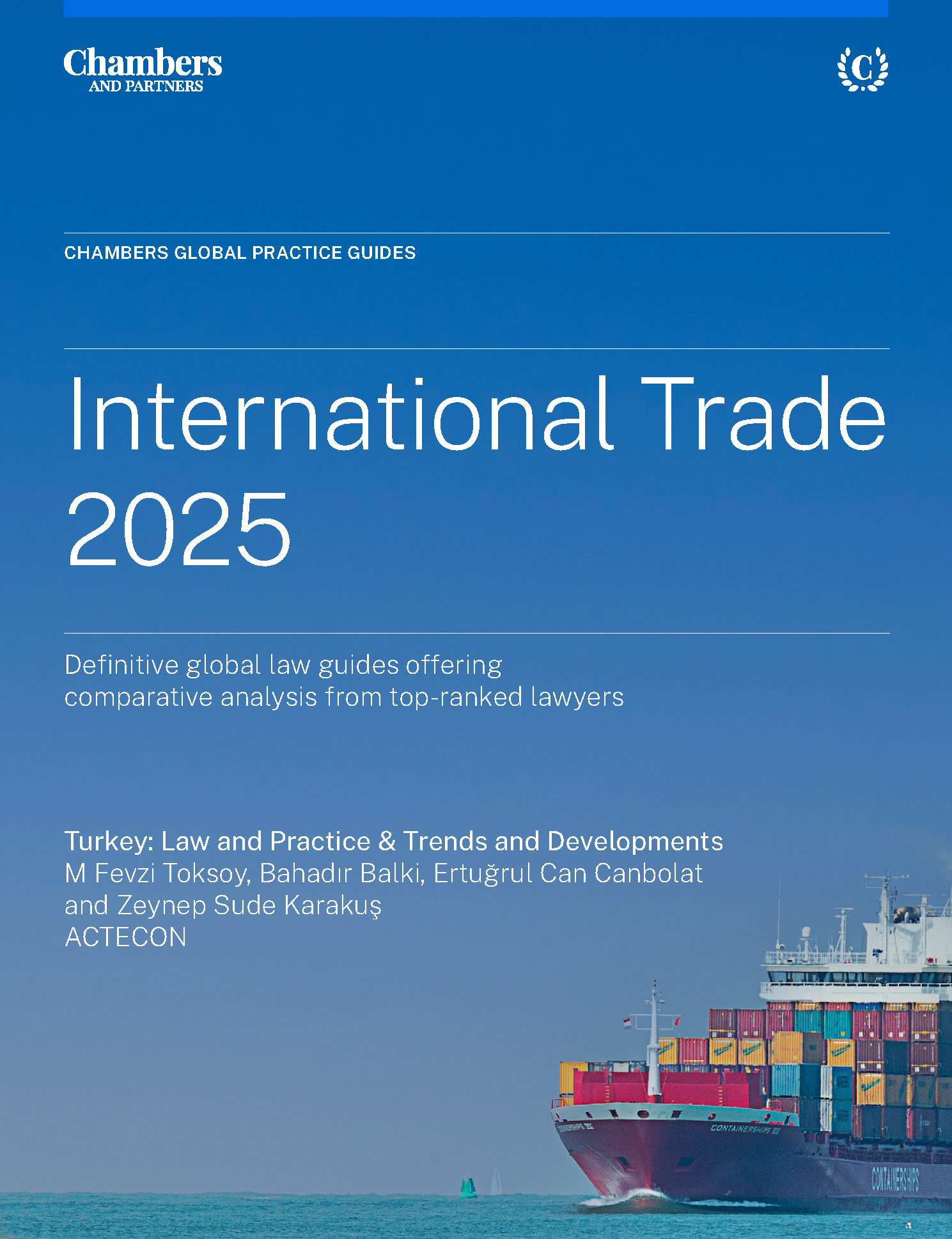TCA’s Preliminary Inquiry into Google’s Shopping Unit Bidding Mechanism
| Competition Law

TCA’s Preliminary Inquiry into Google’s Shopping Unit Bidding Mechanism
Authors: Bahadır Balkı, Nabi Can Acar and Burak Buğrahan Sezer
On 07.11.2019, the Turkish Competition Authority (“TCA”) concluded its preliminary inquiry regarding Google’s[1] bidding system and decided not to initiate a full-fledged investigation. Said preliminary inquiry had been initiated upon a 28.02.2019 dated complaint made with confidentiality request claiming that:
- Google is in dominant position in search services,
- Google’s Shopping Unit and AdWords are crucial for e-commerce companies,
- Its online advertisement services, AdWords and Shopping Unit, are using an algorithm-based bidding mechanism which essentially realizes an auction amongst bidders in every search made by the users within milliseconds,
- As the e-commerce market has been continuously growing, players with high market power in global level have entered into the Turkish market,
- Mentioned global players can manipulate Google’s advertisement algorithm utilizing their market power and dominate the online advertisement spaces,
- Hence, Google’s algorithm may be discriminatory and may cause relatively small e-commerce companies to be excluded from the market,
- Therefore, Google needs to revise its structure and take precautions and
- In addition to the abovementioned claims, Google’s bidding method is inclined to cause excessive pricing in the market.
The complainant explained Google’s bidding system, referred to Trendyol’s (an e-commerce company which was acquired by Alibaba) advertisement strategy realized in Black Friday and concluded that considering global players’ entries into Turkish market such as Amazon, Trendyol demonstrates the possible outcomes how these global players with immense market power can restrict competition.
The TCA’s Relevant Product Market Determinations and Google’s Position
Prior to evaluating the conduct, the TCA examined the relevant market and its structural characteristics. The TCA defined three separate relevant product markets for the case at the hand; “general search services market”, “product listing ads market” and “e-commerce services market”.
As the TCA states, general search services market is a multi-sided market where on one side is consisted of users/consumers who make searches and need the results and on the other side is consisted of content providers who provides the content that feeds these search results. Additionally, since the value of the platform for the one side is generated by the number of users on the other side of the market, the general search services market also contains indirect network externalities. While determining the market, the TCA compared several different services and examined whether they are substitute for each other based on demand and supply substitution.
In this context, the TCA analyzed the differences of content websites and general search services platforms. As they differ from their initial intention since one is mainly aimed to provide content and the other is aimed to become a tool to reach such content, they also differ on the basis of their search services. While general search services platforms provide user with the ability to search anything in the internet, the content websites can only offer a limited but specialized search within the mentioned website. Therefore, the TCA determined that there is no substitutability between content websites and general search services platforms.
There are also specialized search services which provide services only within the context of a specific sector. Search services focused on hotel or flight reservations can be given as examples of mentioned services. As explained, since said services provide focused results with special filters, the TCA decided that they are not substitutable for general search services.
Other platforms that the TCA evaluated whether if they are substitutable with general search services are social networking sites such as Facebook. The TCA mentions Facebook’s new services such as weather forecast, restaurant searching and marketplace and further states that even though it appears as there is a limited substitutability, the social network users mainly utilize the platforms to follow the timelines regarding their interests and people who they want to be informed about. Additionally, social networks offer search services limited to their own contents. Therefore, the TCA did not deem social networks as a part of general search services market either.
As per the advertisement services, the TCA evaluated the market by dividing it into two main categories; online and offline advertisement. After determining they are not substitute for each other since online advertisement (i) provides the opportunity to reach a targeted consumer group, (ii) is more convenient in terms of monitoring the performance of the ads (iii) and is more cost efficient since it adopted pay-per-click model, the TCA further categorized the online advertisement into two area; search ads and non-search ads. The non-search ads are the ads displayed in the content websites based on user’s data. Google is active in this area with AdSense and Double Click. The TCA mentioned in its decision that non-search ads enable companies to reach to consumers who visit the website that the ad is displayed while search ads enable them to reach to consumers who search certain words in the search engines. Therefore, search ads are more focused on the consumers who decided what they want to buy and started searching for it. However, non-search ads are more suitable for establishing a brand awareness. In light of these, the TCA ruled that search ads and non-search ads are not substitute for each other.
Following, the TCA stated that there are two main types of search ads offered by Google; product listing ads and AdWords (text-based advertisements). Product listing ads are the ones displayed on top of the search results of Google with images and prices of the concerned product while AdWords are text-based advertisements displayed in the results section of Google amongst other non-advertised search results with a disclaimer. Product listing ads direct the user/consumer to the purchase page while the AdWords direct the user/consumer to the relevant website. In addition to the examination, the e-commerce undertakings stated the following on their responses to TCA’s information requests:
- There is no substitutability between mentioned two advertisements,
- The traffic gained from the product listing ads differs from others in quality and
- The undertakings generally utilize both services and allocates separate budgets for them.
Considering the responses with the information and evaluation provided by the TCA, it is concluded that the mentioned two kinds of advertisement are not substitutable. Therefore, the TCA defined relevant product market as product listing ads.
In addition to the information above, the TCA also defined a product market for e-commerce services since it is directly affected by the concerned conducts. In line with its previous decisions, the TCA determined the market as e-commerce services.
Google’s Bidding and Pricing Structure
As Google explained in their responses to TCA’s information requests, the online advertisements are purchased in milliseconds as users make their searches. The algorithm opens a bidding and evaluates all previously placed orders in different terms and decides the one to be displayed in the results page. It is mentioned that Google utilizes Second Auction Model which differs from their previously utilized auction mechanism, namely, First Auction Model. The first auction model is basically tender bidding in a classical sense where the highest bidder wins the election and pay the price it offered fully. However, in the second auction model, the highest bidder wins but only pays a price which is only 0,01 USD higher than the second highest offer. Therefore, the purchasers only pay the exact amount enough to win the auction, which creates efficiency.
It is important to emphasize that Google mentioned; the auction is not solely based on price offers but also takes into consideration factors such as relevance to consumers’ search, location and other data and the quality of the ad and the website which placed the ad. The quality of the ad and the website creates the quality score of an advertiser which is utilized in the calculation of the outcome of the auction. Therefore, a purchaser with high quality ad and website but low budget can still win an auction. The documents acquired by the TCA also proves this argument.
Evaluation
In its decision, the TCA determined that Google is in dominant position in the general search services market and product listing ads market. The TCA considered Google’s market share in usage rates of search engines in Turkey and globally. In addition to the TCA’s and European Commission’s previous decisions regarding Google, the statistics used in the concerned decision demonstrated that Google has a market share over 90% since 2013 in Turkey and globally. Also, considering Google’s high brand awareness, economic and financial power and the network externalities in the market, the TCA determined that there are high barriers to entry in the general search services market. Furthermore, there is no buyer power against Google which can balance its market power.
After establishing that Google is in dominant position, the TCA evaluated the alleged conducts. The TCA categorized the allegations as; (i) discrimination caused by Google’s auction algorithm and (ii) excessive pricing.
As the TCA states in its decision discrimination can be divided into two; as primary line injury discrimination and secondary line injury discrimination based on the parties to which the harm has been aimed. In primary line injury discrimination, there are discriminatory actions against the competitors in the markets in which the dominant undertaking itself or its affiliates operate. In this type of discrimination, the undertaking in the dominant position, acts to exclude competitors from the market in which it or its undertakings either directly or indirectly operate, or to complicate the activities of competitors. In the secondary line injury discrimination, the dominant undertaking acts in a discriminatory manner towards its customers in markets where it does not operate.
However, after examining the document and information obtained during the preliminary inquiry, the TCA stated that the algorithm used for the auction model by Google is not suitable for such conduct. In addition to this, there is no reasonable motive for Google to favor an undertaking over another for such behavior can restrict competition which will reduce Google’s revenue in long term and also can defame Google’s brand. Furthermore, the complainant referred to Trendyol’s advertisement strategy during Black Friday, however when examined, such result is due to Trendyol’s own strategy and not caused by Google. The exemplary search results obtained from Google shows that it is possible for every undertaking to win the auction and be displayed in the ads. As mentioned before, the algorithm takes into account many variables, from quality to geographic relevance to the consumer. Therefore, the TCA decided that there is no abuse of dominance through discrimination.
As per the excessive pricing allegations, the TCA determined that it is unlikely for Google to perform such conduct since, due to nature of auction model, Google is not the party determining the prices to be charged for its services. The prices are realized during the auction through the orders placed by the customers. The TCA further investigated an outside intervention into the auction mechanism and determined that the algorithm is not manipulated manually from outside. It is also stated that conducting Economic Value Test for determination of excessive pricing is not possible due to two reasons. First of all, it is not possible to calculate the advertising cost of Google, as it is proportional to the clicks drawn by the product; calculating the rate of profitability and determining what is the reasonable profit margin is also not possible. Secondly, in the search ads market, where the price can be differentiated even for the same product every second, it is not possible to compare the price of the products with the advertising price realized in a competing search engine. Therefore, the TCA deemed it is impossible to conclude about whether the prices are excessive or not since it is difficult to interpret which profitability rate can be deemed as excessive. Therefore, it has been ruled that there is no abuse of dominance via excessive pricing either.
Significance of the Preliminary Inquiry
The TCA’s decision is of importance for Google since it basically certifies Google’s algorithm-based bidding mechanism as infringement-free. Indeed, it is repeatedly underlined that due to its nature, the auction mechanism cannot result with excessive pricing or discriminatory practices. Considering this, unless the bidding mechanism is disturbed with an outside intervention, it is not possible for it to create competition law related concerns.
It is also worth to mention that just like European Commission[2], the TCA is not considering social networking sites as a part of general search services market since their substitutability with general search services is considered as limited.
[1] The economic unity consisting of Google LLC, Google International LLC and Google Reklamcılık ve Pazarlama Ltd. Şti.
[2] Case AT.39740 — Google Search (Shopping)







